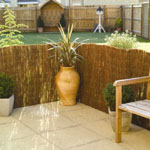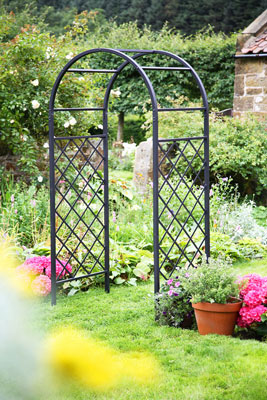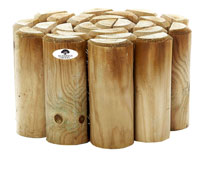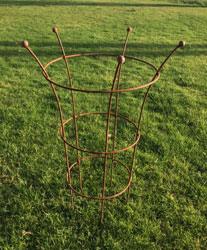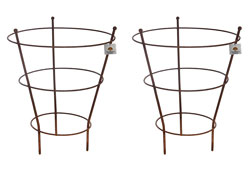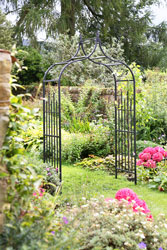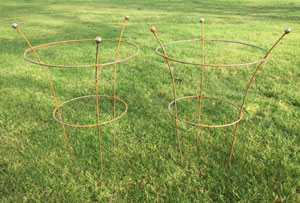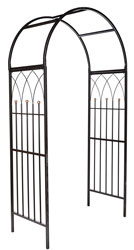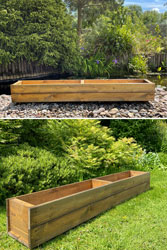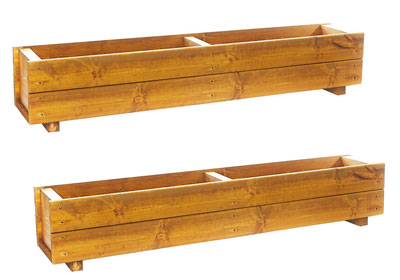
01757 28927301757 289273

UK Garden Supplies Bowland House, Ellerton, York, United Kingdom,
Garden Fertillisers
Garden Compost Making
Compost does not have to be completely broken down to be used. If you are using it as a mulch it will look better, but if it is being dug in, it’s ready when you say it is. However the more we can speed the process up the better, less goodness will be leached out by rain and it will reduce the amount of storage space you need.
The first thing to realise is that what does the breaking down is a mixture of fungi and bacteria, and these are resident in all garden soil, it can therefore help to sprinkle some soil (or even some finished compost) at every level as the pile builds to enable them to colonise the heap quicker.
The rate at which the fungi and bacteria can break down the matter will depend on the surface area they have to go at, so particularly for slow decomposers such as woody stems and hedge clippings shredding these will speed things up.
Aeration is important so try to avoid thick layers of grass clippings. Intersperse with layers of cardboard (do not flatten boxes) and scrunched up paper, woody stems or shredded hedge trimmings. Cabbage stalks and the like should be flattened by a heavy hammer or similar or they will still be intact when all else is decomposed.
The higher the temperature of the heap, the quicker it will get done – but unless you have a massive garden it is not likely to be very hot. However you can do things like put an old carpet on the top and try to insulate the sides. Best of all protect it from rain.
Worms can help slightly in the latter stages, but high temperatures will kill them. Furthermore the worms you want in your compost heap are brandlings, they will die at temperatures above 30o or if the heap freezes, and they won’t survive in soil. If all this sounds like I am trying to put you off worms – it’s because I am!
The ideal pH for your composting rubbish is close to 7, i.e. neutral, neither acid or alkaline. Up to 8.5 is ok so if you want to add lime feel free to do so – but don’t then use the compost on rhododendrons, azaleas, camellias or heathers.
The first thing to realise is that what does the breaking down is a mixture of fungi and bacteria, and these are resident in all garden soil, it can therefore help to sprinkle some soil (or even some finished compost) at every level as the pile builds to enable them to colonise the heap quicker.
The rate at which the fungi and bacteria can break down the matter will depend on the surface area they have to go at, so particularly for slow decomposers such as woody stems and hedge clippings shredding these will speed things up.
Aeration is important so try to avoid thick layers of grass clippings. Intersperse with layers of cardboard (do not flatten boxes) and scrunched up paper, woody stems or shredded hedge trimmings. Cabbage stalks and the like should be flattened by a heavy hammer or similar or they will still be intact when all else is decomposed.
The higher the temperature of the heap, the quicker it will get done – but unless you have a massive garden it is not likely to be very hot. However you can do things like put an old carpet on the top and try to insulate the sides. Best of all protect it from rain.
Worms can help slightly in the latter stages, but high temperatures will kill them. Furthermore the worms you want in your compost heap are brandlings, they will die at temperatures above 30o or if the heap freezes, and they won’t survive in soil. If all this sounds like I am trying to put you off worms – it’s because I am!
The ideal pH for your composting rubbish is close to 7, i.e. neutral, neither acid or alkaline. Up to 8.5 is ok so if you want to add lime feel free to do so – but don’t then use the compost on rhododendrons, azaleas, camellias or heathers.
That you need to know about Fertilisers
When plants grow, and flower and set fruit or seed they make their own food by the action of the sunlight on the chlorophyll contained in the plants leaves, but they do need to get some of the raw materials including water from the soil, along with carbon dioxide which they get from the air.
The main components they need from the soil (other than water) are nitrogen, phosphorus and potassium (sometimes known as potash). Most fertilisers you buy will consist largely of these constituents, nitrogen is a gas so it comes in the form of nitrates, and phosphorus as an element is not nice to handle so this comes in the form of phosphates. The relative amount of these three in a fertiliser is given in the form of an NPK ratio (K is the chemical symbol for potassium).
These three components are used by the plant for different processes:
Nitrogen encourages leaf growth.
Phosphorus encourages root growth.
Potassium encourages fruit and flower development
Growmore the most commonly available general fertiliser has an NPK ratio of 7,7,7 i.e. equal amounts of the three component. An excellent general fertiliser for you vegetable beds.
Bone meal another commonly available fertiliser has a ratio of 4,12,0. So don’t use bone meal on your flowering annuals, but it is an excellent fertiliser to add to the ground when planting a shrub or a tree.
Tomorite, developed to encourage tomato growth has a ratio of 4,3,8, so high in potassium, and good for fruit and flowers – this is what to use on your hanging baskets, containers, flower beds and fruit trees/bushes.
There are a few trace elements that plants need, such as magnesium, calcium and sulphur. These are contained in general fertilisers but if you have a very acidic soil you may find certain plants suffer from yellow leaves because they are not getting enough magnesium, in this case an application of Epsom salts should cure the problem.
Do not be tempted to use fertilisers to the exclusion of compost and manure, these more natural fertilisers will get you the right balance of bacteria in your soil and will improve the soil structure


